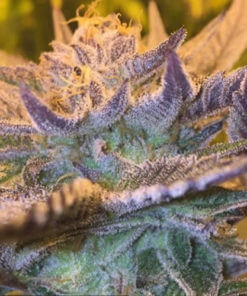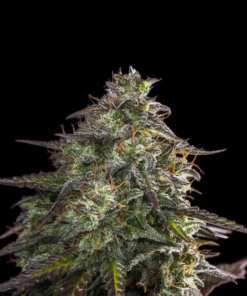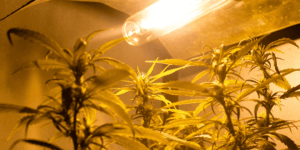cannabis growing
Cannabis Seed Nutrition: What you need to know
Cannabis cultivation has evolved dramatically, with a significant focus on genetics, growing techniques, and, crucially, seed nutrition. Understanding the nutritional needs of cannabis seeds and seedlings is foundational for maximizing their growth potential and ensuring a healthy, vigorous start. This guide dives deep into the nutritional universe of cannabis seed nutrition, shedding light on the critical roles of macronutrients and micronutrients, their requirements through different stages of seedling growth, and how these needs vary across autoflowering, regular, and feminised seeds.
Nutritional Foundations: Macronutrients and Micronutrients
At the heart of cannabis seed and seedling nutrition are two categories of nutrients: macronutrients and micronutrients. Both play pivotal roles, but their requirements and functions are distinctly different.
Understanding Macronutrients
Macronutrients are the primary nutrients required in larger quantities to ensure the healthy growth and development of cannabis seeds into seedlings. They include Nitrogen (N), Phosphorus (P), and Potassium (K), commonly referred to as the N-P-K ratio on fertilizer packages. Each of these macronutrients serves a critical function:
• Nitrogen (N): Essential for vegetative growth, nitrogen is a key component of chlorophyll, amino acids, and proteins. It supports the development of leaves and stems, driving upward and outward growth.
• Phosphorus (P): Vital for energy transfer and photosynthesis, phosphorus supports root development and the synthesis of DNA and RNA, playing a crucial role during the flowering phase.
• Potassium (K): Potassium regulates water uptake, enzyme activation, and photosynthesis. It strengthens plant resilience against diseases and environmental stresses.
The Role of Micronutrients
While needed in smaller quantities, micronutrients are equally vital for the health and development of cannabis seeds and seedlings. These include Iron (Fe), Manganese (Mn), Zinc (Zn), Copper (Cu), Molybdenum (Mo), Boron (B), and Chlorine (Cl). Each micronutrient supports various plant functions, such as enzyme activation (Zn), chlorophyll synthesis (Fe), and the regulation of water and nutrient uptake (B).
Shop feminised Cannabis SeedsSeedling Stages and Nutritional Requirements
As cannabis seeds germinate and evolve through their seedling stages, their nutritional needs shift. Understanding these stages and the associated requirements is crucial for effective nutrient management.
Germination Stage
During germination, seeds primarily rely on their stored nutrients to sprout roots and shoots. At this stage, external nutrient requirements are minimal. However, maintaining optimal moisture levels is critical.
Early Seedling Stage
As the seedling emerges, the need for macronutrients gradually increases, with a particular emphasis on nitrogen to support foliage growth. Micronutrients, although required in minute amounts, are essential to prevent early deficiencies that can impact growth and health.
Vegetative Stage
During the vegetative stage, the demand for nitrogen peaks as the plant focuses on leaf and stem development. Adequate phosphorus supports root growth, while potassium enhances overall plant vigor. Micronutrients continue to be crucial for enzymatic functions and photosynthesis.
Nutritional Needs Across Cannabis Seed Types
The nutritional requirements of cannabis seeds and seedlings can vary significantly across different seed types: autoflowering, regular, and feminized. Understanding these differences is key to tailored nutrient management.
• Autoflowering Seeds: Autoflowering cannabis plants generally have a shorter growth cycle and may require less nitrogen compared to regular or feminized seeds. Their rapid transition to flowering means they benefit from a balanced N-P-K ratio earlier in their lifecycle.
• Regular Seeds: Regular cannabis seeds, which can develop into either male or female plants, often exhibit a robust vegetative growth phase. This translates to a higher nitrogen demand during vegetation, followed by increased phosphorus and potassium needs as they enter the flowering stage.
• Feminised Seeds: Feminised seeds are bred to produce female plants exclusively, focusing energy on bud production. They may require slightly more phosphorus and potassium during the flowering phase to support bud development and density.
Key Nutrient Requirements
Autoflowering Seeds:
• Balanced N-P-K in early stages
• Lower overall nitrogen requirement
• Consistent micronutrient supply
Regular Seeds:
• High nitrogen during vegetative growth
• Increased P and K during flowering
• Adequate micronutrients throughout
Feminized Seeds:
• Moderate nitrogen during vegetation
• Higher P and K for flowering and bud development
• Continuous micronutrient provision
The nutritional needs of cannabis seeds and seedlings form the foundation of a successful cultivation journey. By understanding the differences between macronutrients and micronutrients, and how these requirements evolve through the seedling stages, growers can optimize their nutrient management strategies.























